Abstract
Polan, C. E. (North Carolina State of the University of North Carolina, Raleigh), J. J. McNeill, and S. B. Tove. Biohydrogenation of unsaturated fatty acids by rumen bacteria. J. Bacteriol. 88:1056–1064. 1964.—A simple, rapid, specific assay for the biohydrogenation of unsaturated fatty acids was developed. With this assay, it was shown that washed suspensions of mixed rumen bacteria hydrogenate linoleic and oleic acids. Butyrivibrio fibrisolvens, a common rumen bacterium, is capable of hydrogenating linoleic acid to octadecenoic acid but not to stearic acid. Complete anaerobiosis is required, and with mixed rumen bacteria more activity is obtained in an atmosphere of hydrogen than of either nitrogen or helium, whereas carbon dioxide is inhibitory. The extent of biohydrogenation varies with the season of the year, and a variable stimulatory effect is obtained upon the addition of boiled rumen fluid. Biohydrogenation activity in B. fibrisolvens is markedly dependent upon the age of the organism and concentration of cells used in the medium. The presence of certain other rumen bacteria, which by themselves are incapable of carrying out the biohydrogenation reaction, can prevent loss of activity of B. fibrisolvens due to age or dilution. Two systems are involved in the complete hydrogenation of linoleic acid: one specific for the conversion of linoleic acid to a monoenoic acid, and the other for the hydrogenation of a monoenoic acid to stearic acid.
Full text
PDF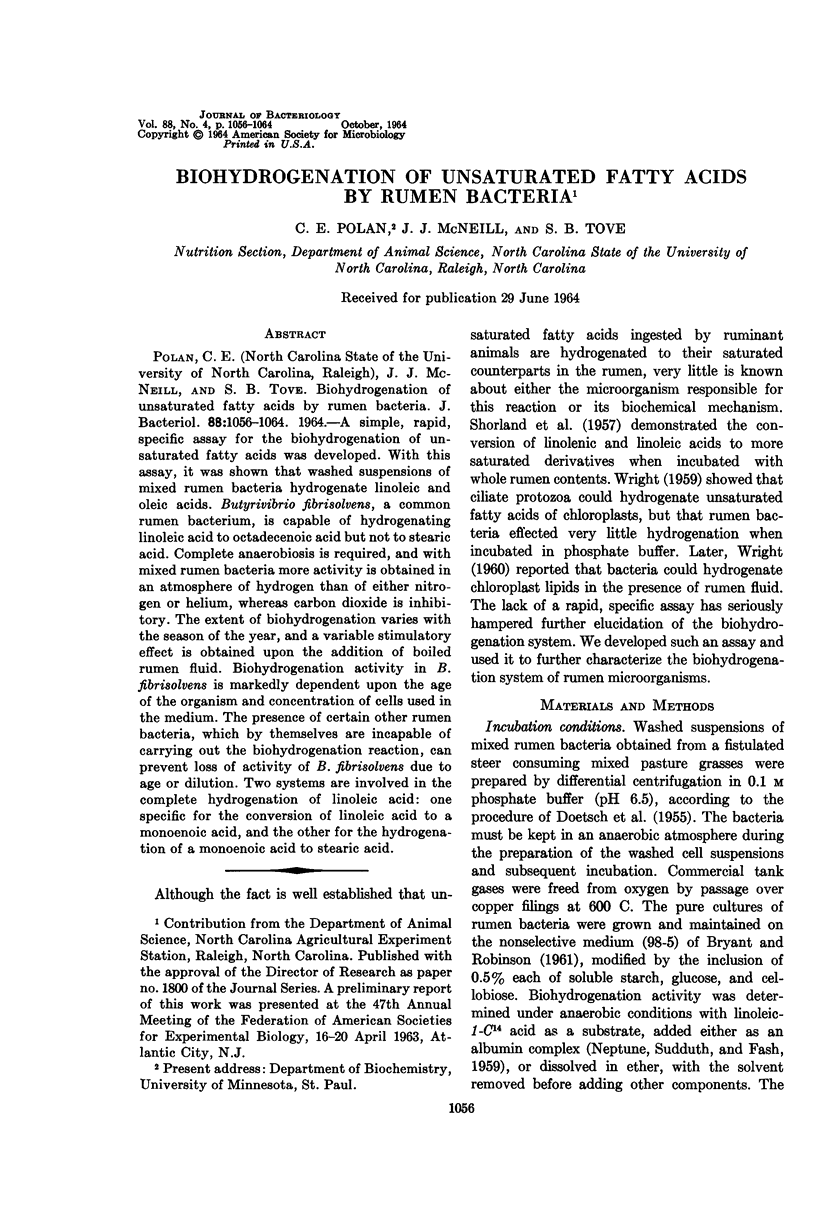
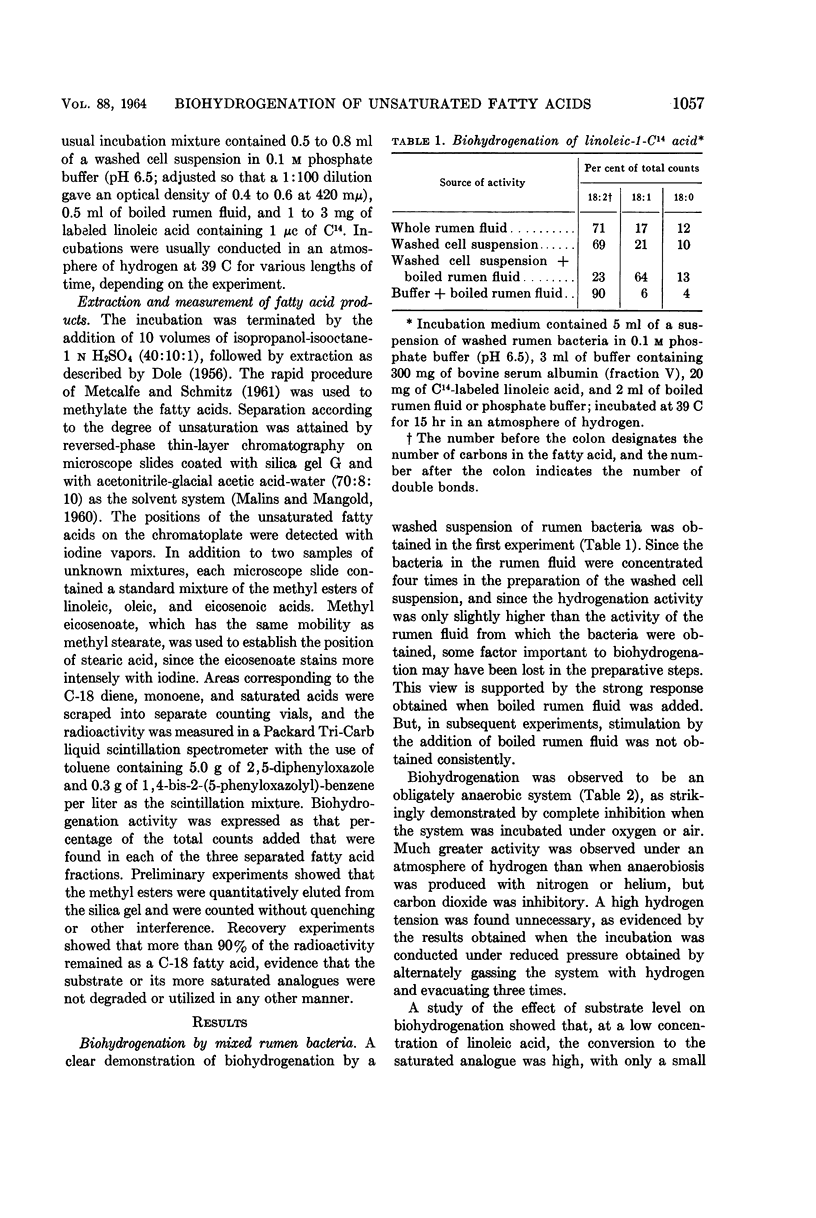
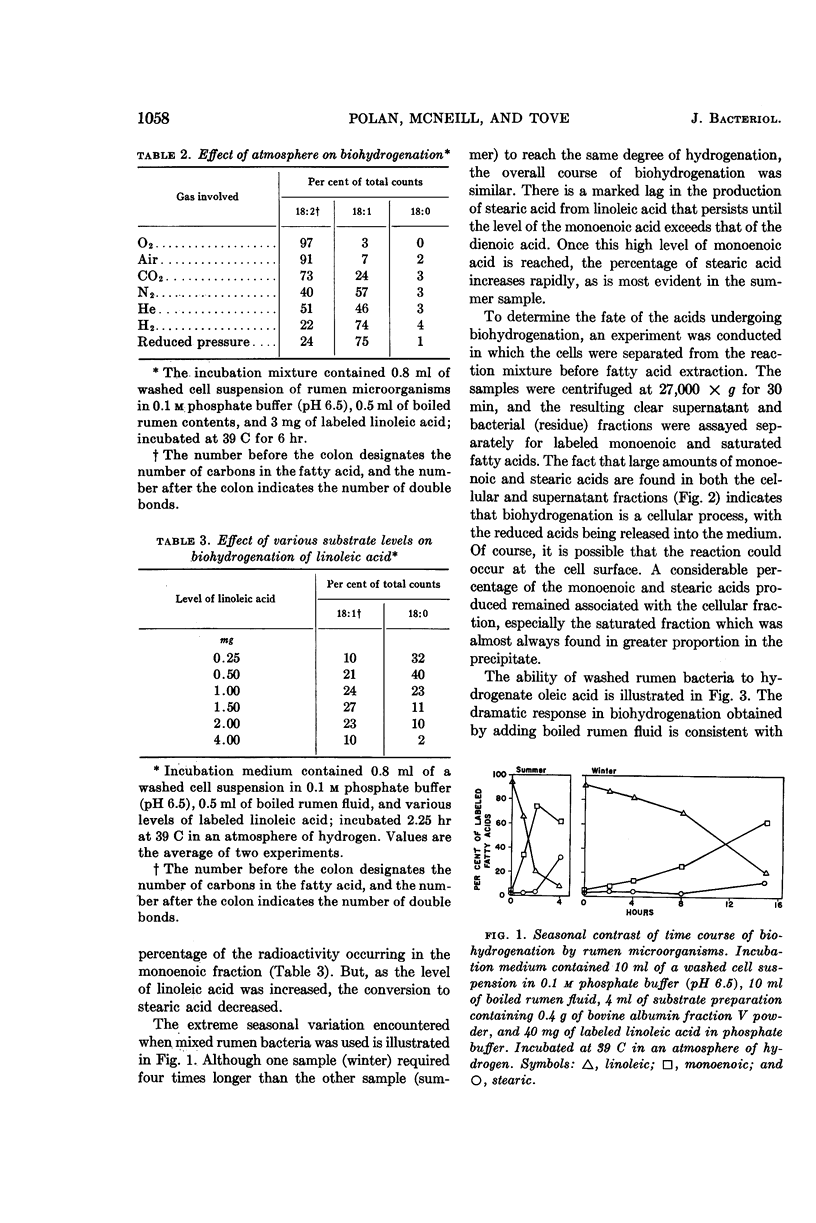
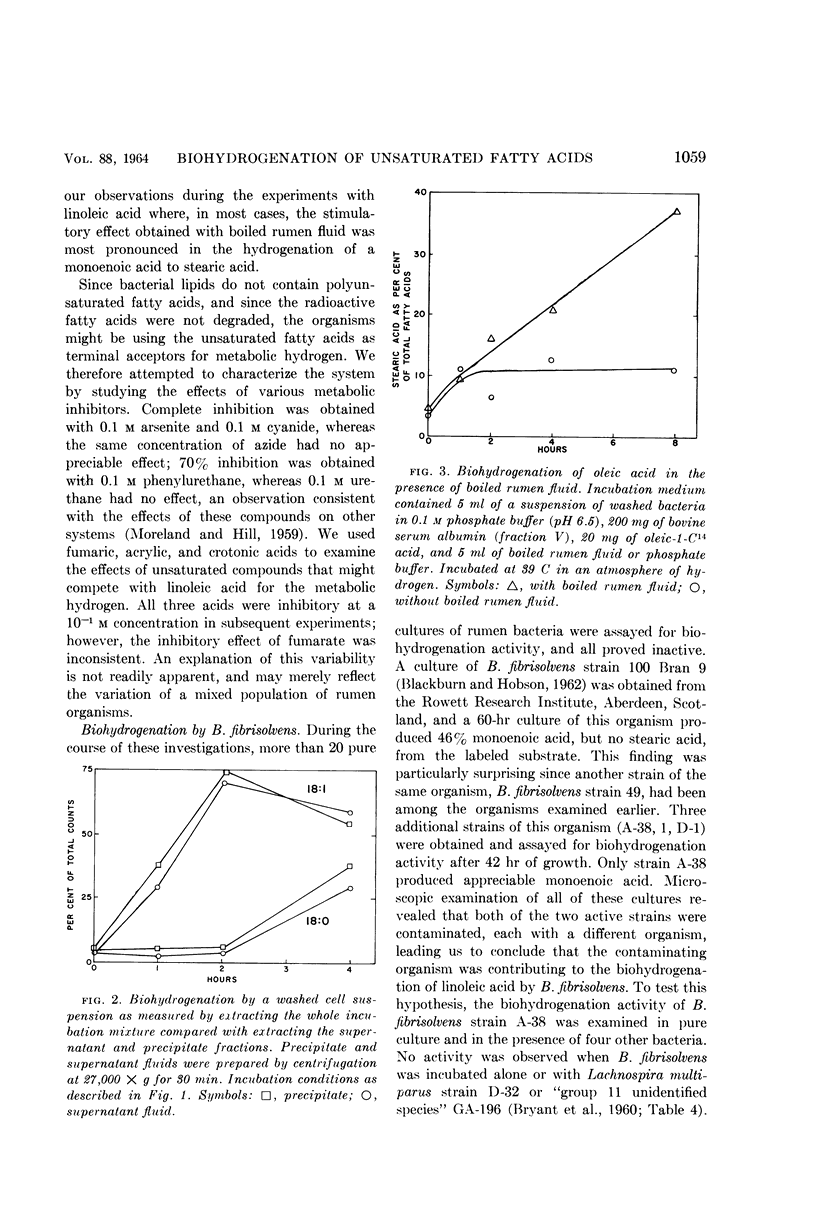
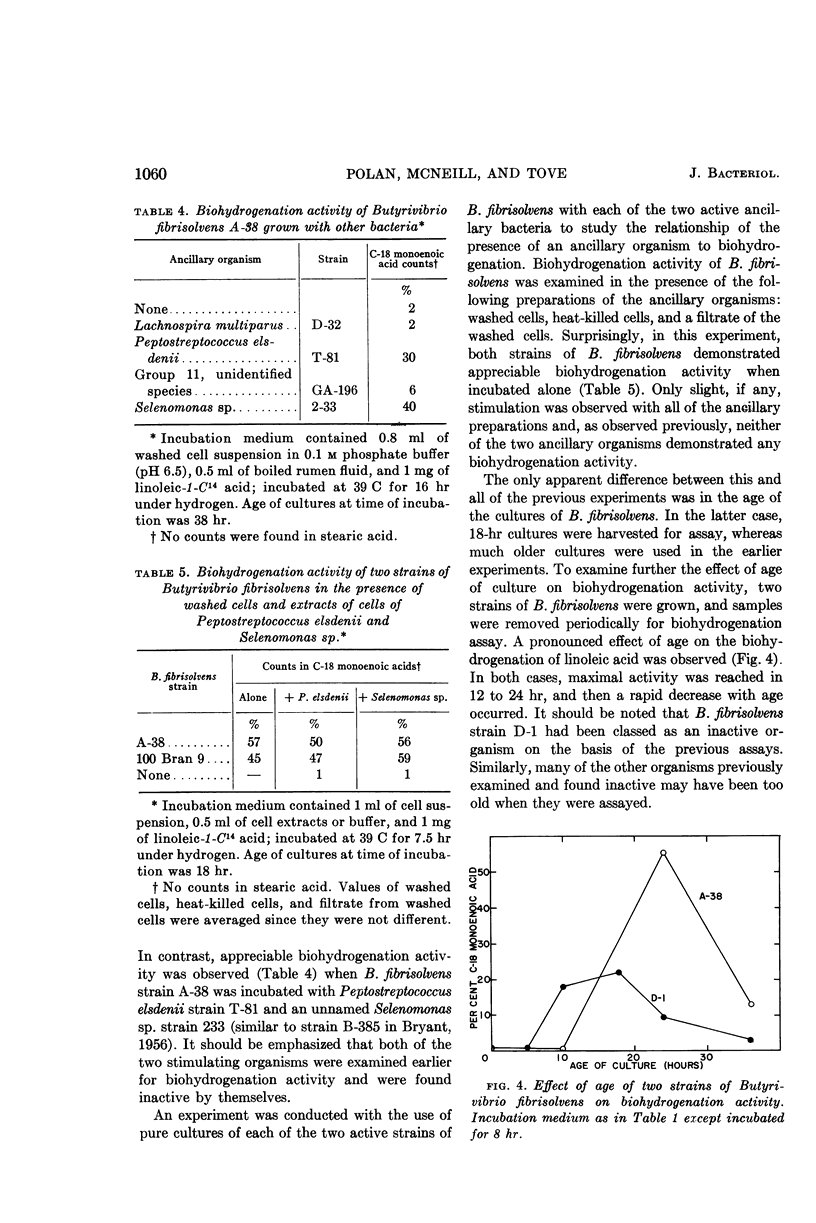
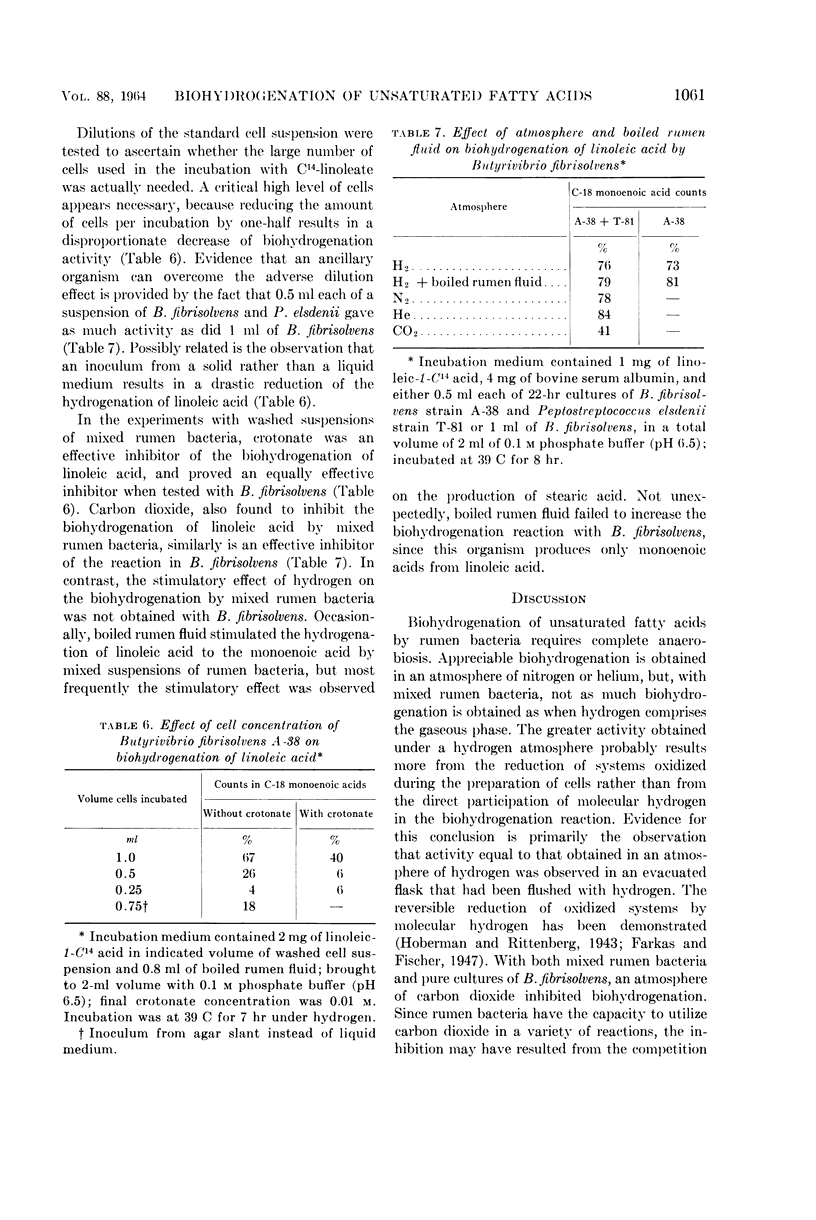
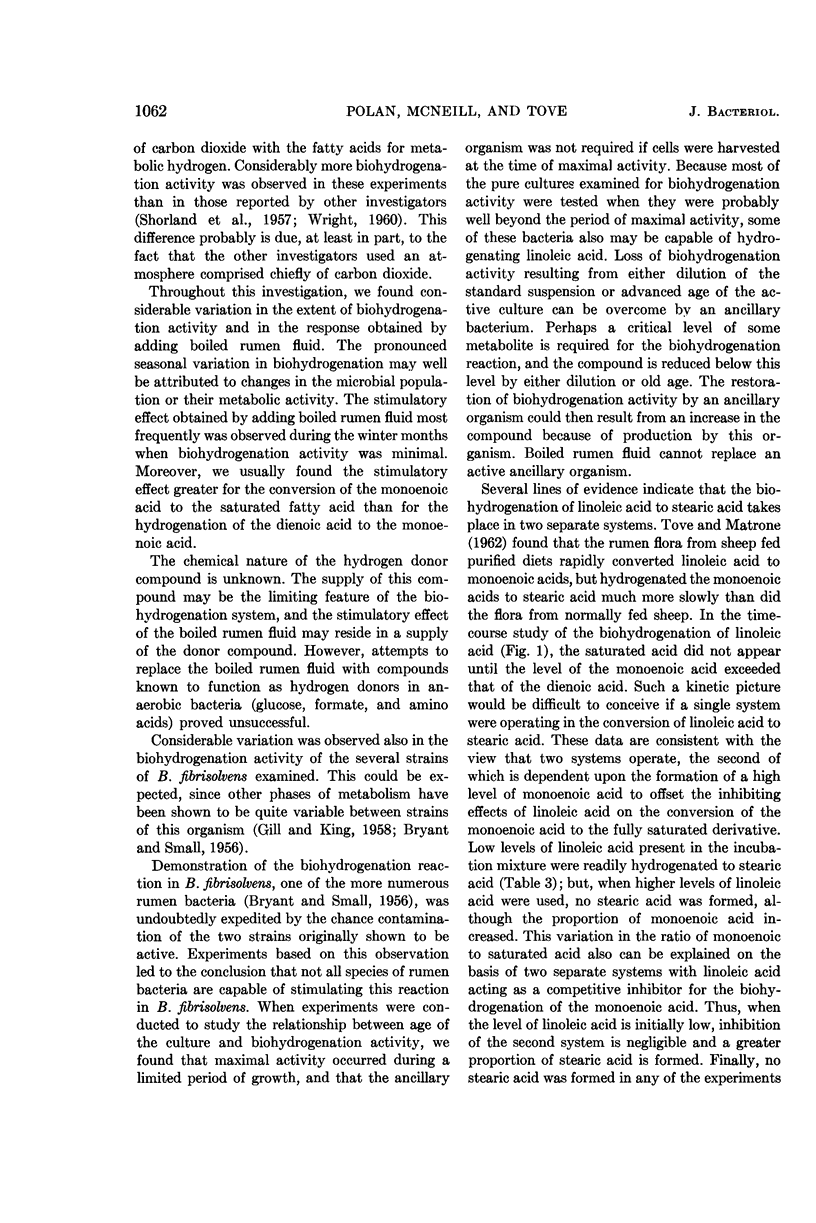
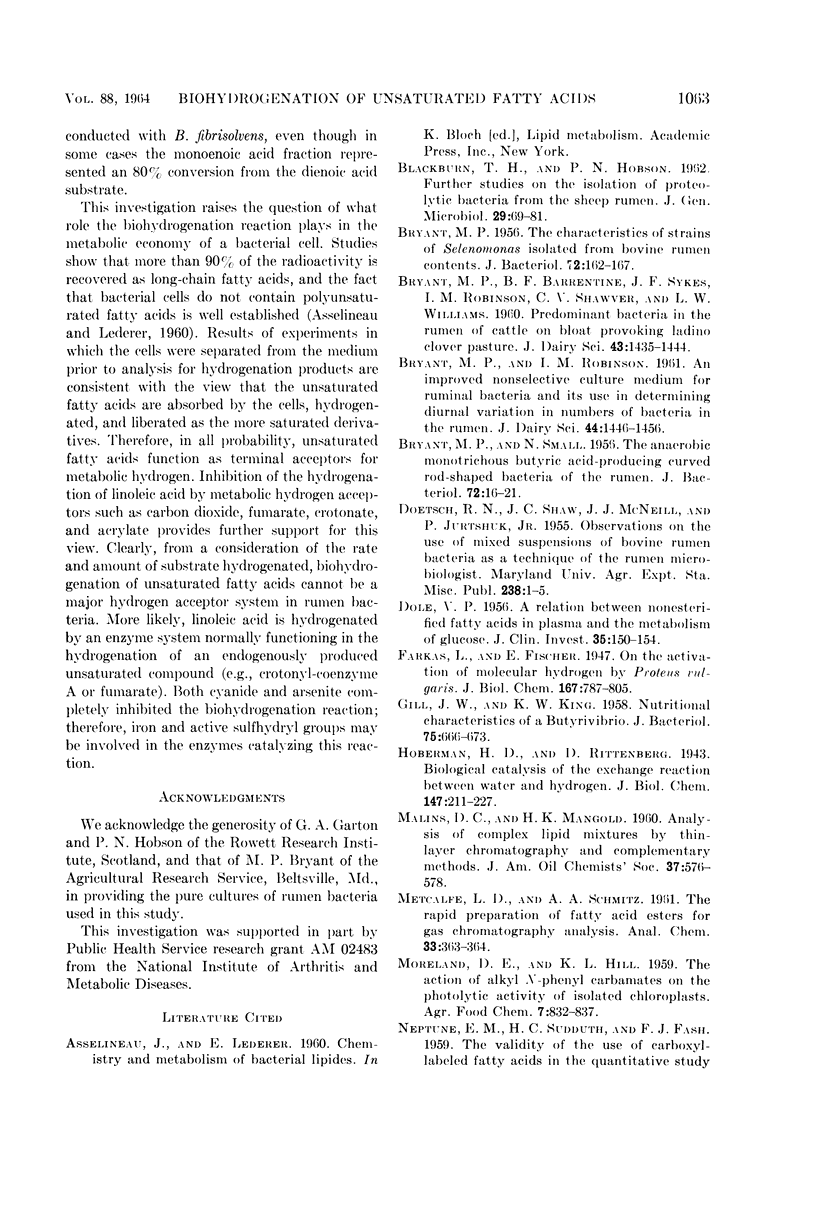
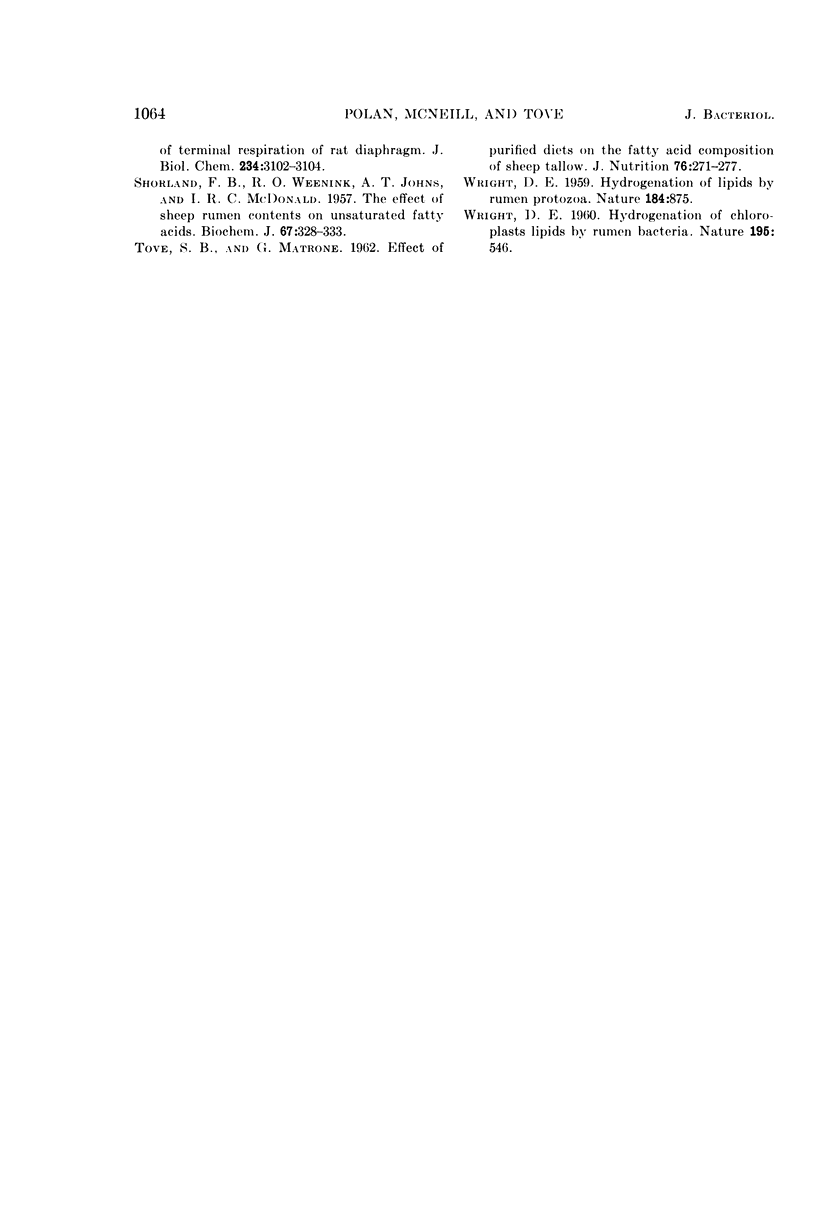
Selected References
These references are in PubMed. This may not be the complete list of references from this article.
- BLACKBURN T. H., HOBSON P. N. Further studies on the isolation of proteolytic bacteria from the sheep rumen. J Gen Microbiol. 1962 Sep;29:69–81. doi: 10.1099/00221287-29-1-69. [DOI] [PubMed] [Google Scholar]
- BRYANT M. P., SMALL N. The anaerobic monotrichous butyric acid-producing curved rod-shaped bacteria of the rumen. J Bacteriol. 1956 Jul;72(1):16–21. doi: 10.1128/jb.72.1.16-21.1956. [DOI] [PMC free article] [PubMed] [Google Scholar]
- BRYANT M. P. The characteristics of strains of Selenomonas isolated from bovine rumen contents. J Bacteriol. 1956 Aug;72(2):162–167. doi: 10.1128/jb.72.2.162-167.1956. [DOI] [PMC free article] [PubMed] [Google Scholar]
- GILL J. W., KING K. W. Nutritional characteristics of a Butyrivibrio. J Bacteriol. 1958 Jun;75(6):666–673. doi: 10.1128/jb.75.6.666-673.1958. [DOI] [PMC free article] [PubMed] [Google Scholar]
- SHORLAND F. B., WEENINK R. O., JOHNS A. T., McDONALD I. R. The effect of sheep-rumen contents on unsaturated fatty acids. Biochem J. 1957 Oct;67(2):328–333. doi: 10.1042/bj0670328. [DOI] [PMC free article] [PubMed] [Google Scholar]
- WRIGHT D. E. Hydrogenation of lipids by rumen Protozoa. Nature. 1959 Sep 19;184:875–876. doi: 10.1038/184875a0. [DOI] [PubMed] [Google Scholar]


